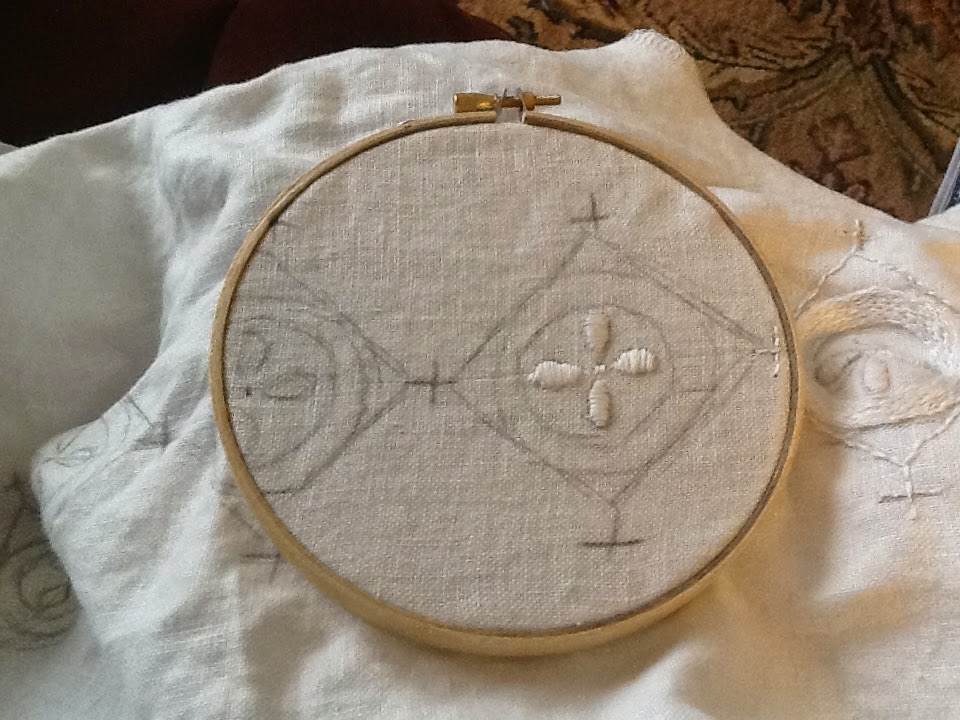After my first attempt at painting a silk banner I knew I needed some help. I made a great looking banner for my husband, but when I tried to set the silk dye in the chemical solution some of the green dye came out and landed on the white part of the banner making it yellow. I asked around the Barony and was told that Master Antonio was the person to talk to. He was kind enough to trouble shoot my problem and send me a copy of his class handout. It turns out I had bought some of the right materials but needed to use a different type of silk. He suggested 16mm crepe de chine and it has made all the difference. He said he had gotten the best results with steam and heat setting the dyn a flow dyes and told me the gutta he used. I have done a few of them now using his methods and they have come out great!!!!
My husband and I have offered silk standards and banners to anyone in the Kingdom of Acre who would like one for the cost of one gold Wilhelm (our kingdom currency). We are doing this service to our Kingdom because Master Antonio is so giving with his talent that we didn't feel right charging real money for them.
I should also mention that recently I have gotten better information on how the standards and banners should be designed and that going forward we will be doing them with a more historical accuracy.
The drawing of the scale of justice. To make sure both scales on the banner looked the same I traced the same design on both sides of the crenellations on the actual silk.
In Antonio's handout he recommended a great set of videos that showed the woman using a PVC frame to hold the banner. I liked the idea and it has worked for us so far. I recently saw something online where they made feet on the bottom of the frame using T connectors and that is what we will be adding to this frame soon.
The frame all put together
Binder clips on the end of rubber bands have been working well for us to hold the silk taught.
The frame ready to go being held away from the table with the help of boxes and books.
Black water soluble gutta.
Drawing all those damn crenellations!!!!!
This used to be our dining room.
All traced out and left to dry for a few hours.
The paints I used. I like painting the areas that will be left white with actual white paint so the whole surface of the banner has the same weight of paint on it.
This is the fun part. It is also hard to not get streaks. I am sure over time I will get better at it.
Now that the painting is done I let it dry for 24 hours. Then I went over the entire banner front and back with my industrial steamer. Then the banner went in the dryer for 1/2 hour with a wet washcloth. I then sewed on some ribbon and it was ready to go.










.JPG)
.JPG)
.JPG)
.JPG)






































.JPG)